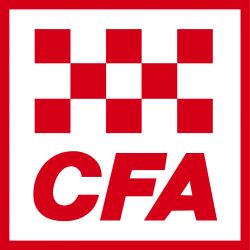Author: admin
-
About us
Ferntree Gully Fire Brigade is a part of the larger Country Fire Authority (CFA). We respond to emergencies in Ferntree Gully, the surrounding suburbs, and for larger incidents anywhere in Victoria. We are a 100% volunteer brigade since 1942 and our members are on call 24/7 365 days a year.
-
Our Captains
Ferntree Gully Urban Fire Brigade has been led by the following individuals as Brigade Captain. Name: From: To: H. Dinsdale July 1942 May 1943 S. Parker May 1943 August 1950 J. White August 1950 April 1955 R. Parker April 1955 June 1958 J. Dinsdale June 1958 July 1962 J. Walker July 1962 September 1962 R.…
-
The Eighties – Bigger and Better
The pager system has been a positive asset to the organisation and, its reliability having been proved, the Brigade alarms in Knox were modified late in 1980, the result being that station sirens no longer operate at night. A series of deliberately lit fires occurred in and around the National Park in the early weeks…
-
The Seventies – Progress
In 1971 the fleet was expanded with acquisition of a Dodge panel van to fill a long-standing need for a mobile control point, and for the transport of personnel and specialised equipment. This vehicle was to be replaced with a later model of the same make in February 1977. Following the precedent set in 1944,…
-
The Sixties – Tested and Proven
An unusually dry spring in 1961 preceded a summer of scorching weather and tinder-dry vegetation. Strong northerlies and soaring temperatures were experienced on the morning of Sunday 14th January 1962, when a fire broke out in the ravine area of The Basin. In combination with another outbreak, which had started to the north of the…
-
The Fifties – ‘C’ Class
Captain Stan Parker resigned in August 1950, and was succeeded by Jim White who had enrolled as a firefighter in August 1942. Jim had been appointed Secretary within the first few months of the foundation of the Brigade and had served continuously in that capacity until his election as Captain. The year 1950 also saw…
-
The Fourties – Post War
When the act was implemented in 1945, the Country Fire Brigades Board and the Bush Fire Brigades Committee were superseded. Country fire brigades and bush fire brigades, hitherto completely separate entities, were now united in the one organisation as “urban” and “rural” fire brigades, respectively. The Ferntree Gully Brigade retained its responsibility for the protection…
-
The Pioneers of the Bush Fire Brigade.
During the first few weeks of 1926, a series of disastrous bushfires claimed more than fifty lives in Victoria and laid waste to more than 900,000 acres of Gippsland’s prime forest regions. These fires reached a peak of intensity on 14th February -a day that was to be remembered for many years as Black Sunday.…
